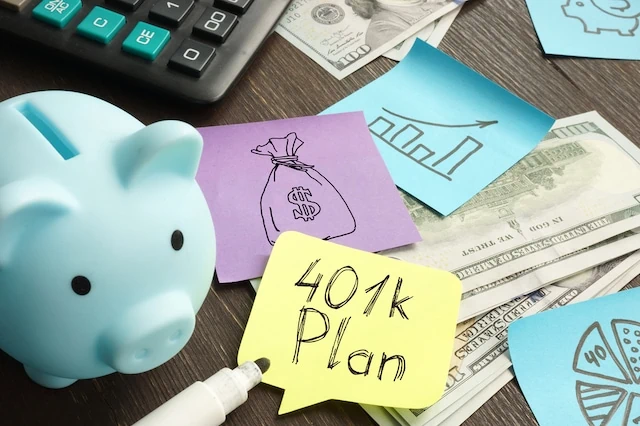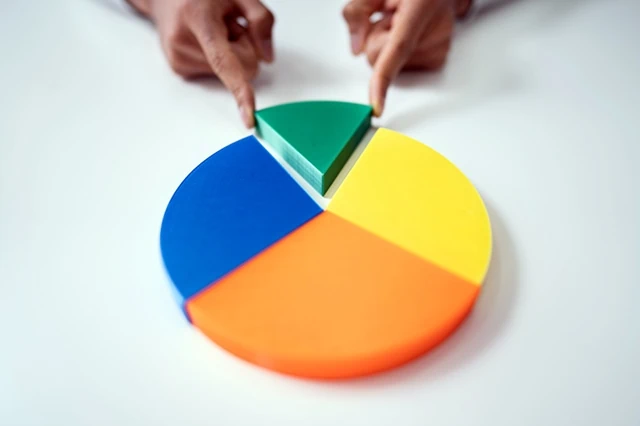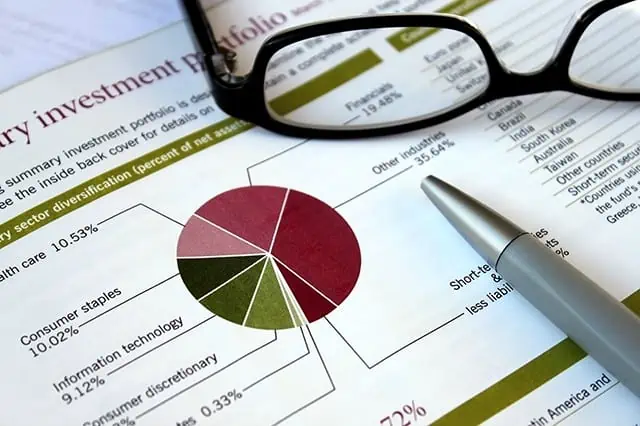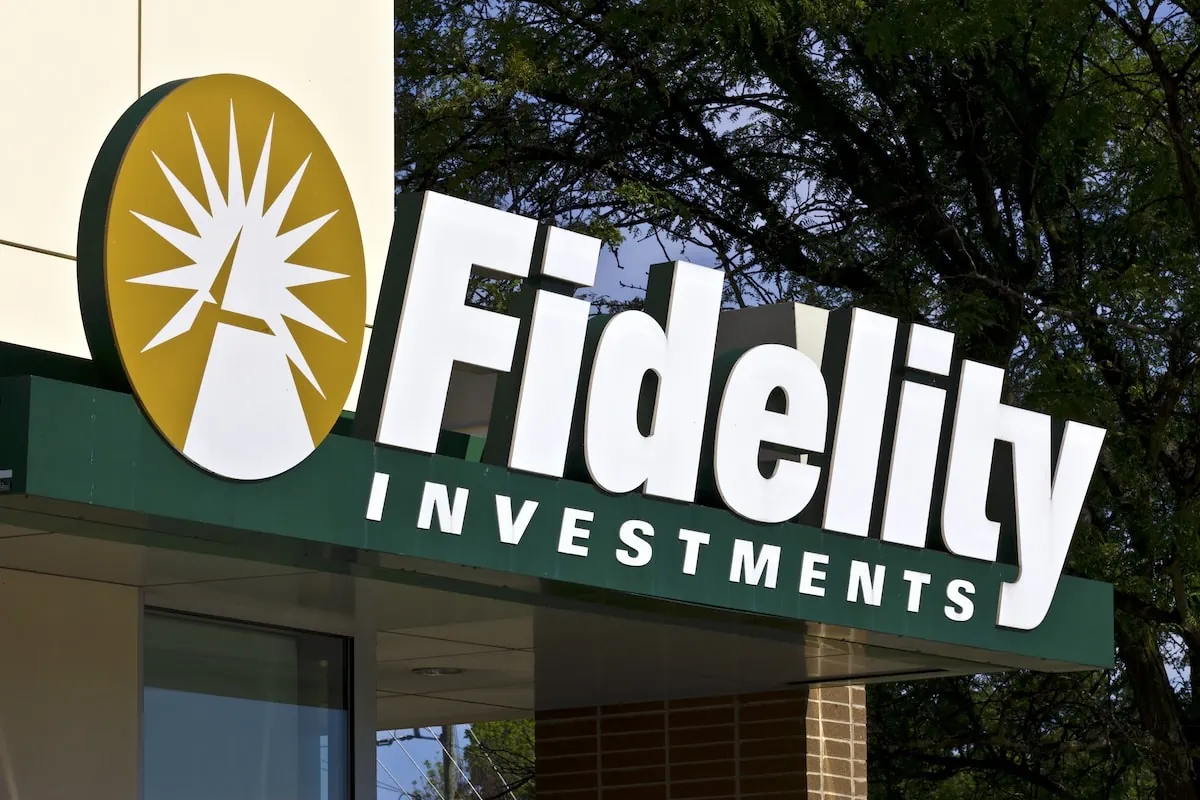If someone asked you how Charles Schwab could help your retirement efforts, your first thought would probably be one of its many investment accounts. Schwab is, after all, one of the biggest names in brokerage and retirement accounts—and it has been for decades. They’ve got the millions of customer accounts to prove it.
But Schwab can actually help you retire no matter who you do your investing with. That’s because it also offers some of the largest and most cost-efficient retirement funds in the game—funds you can buy through most account providers.
If you have a 401(k) through your workplace, there’s a good chance you have at least one (if not several) Schwab mutual funds to choose from. And given both their typically low fees and sound construction, you should give these products a look.
Today, I’ll introduce you to a number of Schwab retirement-focused mutual funds you’re likely to find in your 401(k) plan. To be clear: Your plan might not hold one, some, or all of these. But if they don’t, you can always ask your plan sponsor to include them—or consider buying them in other tax-advantaged accounts, such as an IRA or HSA.
Disclaimer: This article does not constitute individualized investment advice. These securities appear for your consideration and not as personalized investment recommendations. Act at your own discretion.
Editor’s Note: Tabular data presented in this article are up-to-date as of Oct. 31, 2024.
Table of Contents
What Should You Want in a Retirement Fund?

When investing your retirement savings, you need to consider a few critical factors.
To start, a robust retirement portfolio should provide diversification across various asset classes. This typically means stocks and bonds, though it can also mean alternative asset classes such as real estate or commodities. Diversifying your retirement portfolio across these asset classes can help defray your risk and smooth your returns.
Costs matter too. Every dollar spent on fees and expenses is a dollar no longer available to grow and compound over time, so keeping expenses cut to the bone is vital. Good news there: The best Schwab retirement funds will generally have some of the lowest fees and expenses in the business.
And don’t forget taxes. A taxable account, like a standard brokerage account, is better suited to take advantage of certain tax-advantaged investments, such as municipal bonds. For tax-advantaged accounts, such as IRAs, some of the best investments include bond funds and actively managed stock funds. (I’ll explain why when we get to those funds.)
Finally, you ideally want your retirement portfolio to produce regular dividend income. Stocks can regularly experience nasty corrections and bear markets, but a good income fund can provide for your living expenses without forcing you to sell at an inopportune time.
Why Schwab?

Charles Schwab is a U.S.-based brokerage and banking company founded in 1971 as a traditional brokerage company and then as a discount brokerage service in 1974. It is headquartered in San Francisco, California, and operates primarily throughout the United States, but also has international operations.
The firm is the largest publicly traded investment services firm with more than $8.9 trillion in assets under management (AUM). Schwab offers a wide range of financial services, such as investment advice and management, trading services, financial planning, banking services, workplace and individual retirement plans, annuities, and more.
Related: 10 Best Vanguard Funds for the Everyday Investor
On the product side, Schwab features more than 100 different funds boasting more than $870 billion in AUM. Schwab’s funds feature no load or transaction fees—not really a concern in 401(k)s, but advantageous in other accounts, like IRAs and taxable brokerages—and below-industry-average expenses. Schwab offers actively managed funds run by seasoned teams, but it’s also one of the largest providers of indexed mutual funds.
In short: Schwab’s best mutual funds for retirement are generally going to be among your top options period, and they generally won’t make a dent in your wallet.
Related: The 24 Best ETFs to Buy for a Prosperous 2024
The Best Schwab Retirement Funds for a 401(k) in 2024

With all that out of the way, let’s dig into some of the best Schwab retirement funds to hold in a 401(k) that you might consider diving into this year.
Related: Best Schwab Funds to Hold in an HSA
1. Schwab Short-Term Bond Index Fund

— Style: U.S. short-term bond
— Assets under management: $1.5 billion
— Expense ratio: 0.06%, or 60¢ per year for every $1,000 invested
— SEC yield: 4.7%*
Bonds should be a core holding of just about any portfolio. They also happen to be one of the most tax-inefficient asset classes on earth because the bulk of their returns will generally come from interest paid, and interest income is taxed as ordinary income. If you’re in the 37% tax bracket, then you’re losing 37% of your bond interest to taxes.
For this reason, it will virtually always make sense to hold bonds and bond funds in a 401(k), IRA, HSA, or other tax-deferred account.
Related: Best Vanguard Funds to Hold in an HSA
With the yield curve inverted as it is today (meaning that short-term rates are higher than long-term rates), it makes sense to keep a good chunk of your overall bond exposure in short-term bond funds.
One solid short-term bond option is the Schwab Short-Term Bond Index Fund (SWSBX). A little over two-thirds of the portfolio is invested in U.S. government securities, a quarter is in high-quality corporate short-term bonds, and the remaining sliver is in foreign government bonds.
Related: The 9 Best ETFs for Beginners
One of the most critical metrics to consider when considering bond funds is duration, which is a measure of interest-rate sensitivity. As an example, a bond with a duration of 2 years would see its price rise by 2% if interest rates fell by 1% (or conversely, would see its price fall by 2% if interest rates rose by 1%). The actual calculation of duration is fairly complex; it’s the weighted average of the bond’s cash flows. But the key takeaway is that, all else equal, the longer a bond’s time to maturity, the higher its duration—and thus the higher the interest-rate risk. SWSBX has a duration of just 2.6 years, meaning its risk associated with rising interest rates is minimal.
If you’re looking for a low-stress addition to a retirement portfolio, SWSBX fits the bill.
* SEC yield reflects the interest earned across the most recent 30-day period. This is a standard measure for funds holding bonds and preferred stocks.
Related: 7 Best Schwab Funds You Can Buy: Low Fees, Low Minimums
2. Schwab US Aggregate Bond Index Fund

— Style: U.S. intermediate bond
— Assets under management: $5.3 billion
— Expense ratio: 0.04%, or 40¢ per year for every $1,000 invested
— SEC yield: 4.0%
For a more diversified option that covers a wider swath of the bond market, consider the Schwab US Aggregate Bond Index Fund (SWAGX).
Related: 9 Monthly Dividend Stocks for Frequent, Regular Income
The fund offers broad exposure to more than 8,000 U.S. government bonds, investment-grade corporate debt, and mortgage-backed securities (MBSes). Currently, 42% of the portfolio is invested in American government debt, 26% is invested in MBSes, and 24% is invested in corporate bonds, with the remainder invested in modest positions in foreign government debt and other investments.
SWAGX is diversified across the yield curve, with maturities ranging from less than a year to over 20 years. Overall, the fund has a duration of 6.1 years. So, the fund has moderate interest-rate risk. A rise in interest rates of 1% would mean a price decline of about 6%. But remember: This cuts both ways—a fall in interest rates could mean significant capital gains.
Related: 7 Best Fidelity ETFs for 2024 [Invest Tactically]
3. Schwab Global Real Estate Fund

— Style: Global REIT
— Assets under management: $325.5 million
— Expense ratio: 0.75%, or $7.50 per year for every $1,000 invested
— Dividend yield: 3.2%
Real estate has been a preferred asset class since the dawn of human civilization. And today, real estate investment trusts (REITs) offer the potential for both high yield and respectable capital gains.
REITs enjoy a special tax status that allows them to avoid corporate taxation so long as they distribute at least 90% of their net profits as dividends. Because of this tax incentive, REITs tend to be one of the highest-yielding sectors and a perennial favorite among income investors.
Unfortunately, this also makes REITs very tax-inefficient, as a large percentage of the total return comes from taxable dividends. What’s more, REIT dividends are generally not classified as “qualified dividends.” Qualified dividends are taxed at the long-term capital gains rate (0%, 15% or 20% depending on your tax bracket). Non-qualified dividends are taxed as ordinary income, like bond interest, and can face rates as high as 37%, depending on your bracket. Thus, it makes more sense to hold REITs and REIT funds in a tax-advantaged fund like a 401(k) rather than a taxable brokerage account.
Schwab investors looking for real estate exposure could consider the Schwab Global Real Estate Fund (SWASX). The fund is a diversified REIT fund with a global presence. Approximately 60% of the fund is invested in American REITs, with most of the remainder allocated to Europe and Japan. SWASX also has smaller allocations to China, Singapore, Canada and Australia. The portfolio has minimal exposure to the office sector, which has been affected by work-from-home policies, and is most heavily allocated to industrial and logistics properties.
This is a growth-focused real estate fund that focuses on total return, including both capital gains and income. But its 3.2% current yield is mighty competitive in a world in which the S&P 500 yields only 1.2%.
Another reason to consider SWASX for your retirement account? The fund generates a lot of short-term capital gains, as it has annual turnover of about 88%. All of that trading creates taxable income in a regular taxable brokerage account.
Related: The 7 Best Vanguard ETFs for 2024 [Build a Low-Cost Portfolio]
4. Schwab Select Large Cap Growth Fund

— Style: U.S. large-cap growth
— Assets under management: $2.3 billion
— Expense ratio: 0.75%, or $7.50 per year for every $1,000 invested
— Dividend yield: N/A
An old Wall Street maxim says “you never go broke taking a profit.” There is a lot of wisdom in that quote. As a general rule, buying and holding good stocks or good funds and allowing them to compound over years or even decades is the way to go. But having at least part of your portfolio in actively traded strategies can also make sense, particularly in bear markets. Actively traded strategies have their stretches when they outperform passive index strategies, and they can potentially help you to avoid major declines.
Unfortunately, active trading strategies are also woefully tax-inefficient, particularly if your holding period is less than a year. Short-term capital gains are taxed as ordinary income, meaning you could be sharing up to 37% of your gains with Uncle Sam.
Related: 12 Best Long-Term Stocks to Buy and Hold Forever
So, it makes sense to hold funds that do a lot of active trading in a tax-deferred retirement account. There is no precise, universally accepted threshold for what constitutes “a lot” of active trading, but I would consider any fund with portfolio turnover (how much of the portfolio’s holdings are turned over, or replaced, in a given year) over 30% or so to be fairly tax-inefficient. The higher that number goes, the more inefficient the fund.
As an example, let’s look at the Schwab Select Large Cap Growth Fund (LGILX), which is sub-advised by American Century Investment Management and JP Morgan Investment Management. Being a growth fund, LGILX is heavy in technology stocks; it includes Microsoft (MSFT), Apple (AAPL), Nvidia (NVDA) and most of the rest of the large-cap growth stocks you would expect to see.
But this high performance comes at the cost of a lot of active trading; the annual portfolio turnover is about 65%. In a taxable account, that’s a large potential tax liability.
So, LGILX is exactly the kind of actively managed fund best held in a retirement account like a 401(k). The tax deferral neutralizes the negative impacts of active trading, allowing us to enjoy the full benefits of the trading gains.
Related: 12 Best Stock Screeners & Stock Scanners
5. Schwab Dividend Equity Fund

— Style: U.S. large-cap dividend
— Assets under management: $551.5 million
— Expense ratio: 0.88%, or $8.80 per year for every $1,000 invested
— Dividend yield: 1.8%
Qualified dividends are taxed at the same lower rates as long-term capital gains. This is by design.
Dividends were previously taxed like bond interest, as ordinary income. But following the tech bust of 2000-02, the Bush administration changed the tax laws in an attempt to encourage more responsible behavior from both investors and the companies they invest in. The thinking was that lowering the tax on dividends would encourage more companies to pay dividends and encourage more investors to take a long-term investor mindset as opposed to a short-term gambler mindset.
It was a godsend for income investors, but let’s be clear: Dividend stocks are still woefully tax-inefficient. Long-term capital gains remain unrealized—and thus not taxable—until you sell, whereas dividends are still taxed when they are received … even if at a lower rate than in decades past.
For this reason, it’s generally going to make sense to keep dividend stocks and dividend funds in a tax-deferred retirement account. And one worthy contender is the Schwab Dividend Equity Fund (SWDSX).
SWDSX includes some traditional high yielders among its largest holdings, including Big Oil dominators Exxon Mobil (XOM) and Chevron (CVX). But while the fund might have a dividend focus, that doesn’t mean that it’s a stodgy widows-and-orphans investment. SWDSX is full of quality blue-chip stocks with a history of consistently paying dividends, including growth names like Microsoft, which is the fund’s third-largest holding.
If you’re looking for a good collection of dividend-paying workhorses that you can own for the long term, SWDSX is a worthy addition to your retirement portfolio.
Related: 15 Best Investing Research & Stock Analysis Websites
6. Schwab S&P 500 Index Fund

— Style: U.S. large-cap stock
— Assets under management: $103.6 billion
— Expense ratio: 0.02%, or 20¢ per year for every $10,000 invested
— Dividend yield: 1.2%
If we’re talking about tax consequences alone, a taxable account is much better positioned to take advantage of an index fund’s tax efficiency than a tax-advantaged account.
However, given that a 401(k) is often an investor’s primary (and sometimes only) investing account, and given that performance is the ultimate goal, an S&P 500 index fund absolutely belongs in any 401(k).
Related: Best Vanguard Retirement Funds for a 401(k) Plan
The vast majority of fund managers who run large-cap funds (funds that invest in larger companies) struggle to consistently beat the S&P 500 Index, particularly after fees. In the first half of 2023, 60% of active managers underperformed the S&P 500, according S&P Dow Jones Indices. That’s no anomaly: A majority of active managers have failed to beat the S&P 500 in 20 out of the past 23 years.
So if you can’t beat it, join it.
The Schwab S&P 500 Index Fund (SWPPX) isn’t just a cheap way to get access to the S&P 500—it’s one of the cheapest ways across both mutual funds and ETFs alike, charging a razor-thin expense ratio of just 0.02%. It’s harder to get much closer to free than that.
Related: 5 Best Fidelity Retirement Funds [Low-Cost + Long-Term]
The S&P 500 is a collection of the largest and most dominant American companies. To be selected for this stock market index, a company must have a market capitalization of at least $18.0 billion, its shares must be highly liquid (shares are frequently bought and sold), at least 50% of its outstanding shares must be available for public trading, it must have positive earnings in the most recent quarter, and the sum of its previous four quarters must be positive. Once a company is in the index, it doesn’t necessarily get kicked out if it fails to meet all of the criteria at some point in the future, but the selection committee would take that under consideration.
Turnover (how much the fund tends to buy and sell holdings) tends to be low, as only a handful of stocks enter or leave the index in any given year. This makes SWPPX an extremely tax-efficient option for taxable investment accounts. But if you do the majority of your investing through a 401(k), consider holding SWPPX there, too—sure, you won’t enjoy a premium tax edge, but you’ll be putting your money into one of Schwab’s best retirement funds.
Related: 7 Best Schwab ETFs to Buy [Build Your Core for Cheap]
7. Schwab Target-Date Funds

— Style: Target-date
— Expense ratio: Schwab Target Funds: 0.26%-0.59%, or $2.60-$5.90 per year for every $1,000 invested; Schwab Target Index Funds: 0.08%, or 80¢ per year for every $1,000 invested
One of the challenges in retirement planning is getting the asset allocation right, or having an asset class mix that is appropriate for an investor at your age and stage of life. An ideal portfolio for a 20-year-old is likely going to be very different from that of a 40-year-old, and both those portfolios will be different from what’s ideal for a 60-year-old.
That’s where target-date funds can really add value.
Target-date funds—also called life-cycle funds—are a type of mutual fund that are designed to change their asset allocation over time. Target-date funds start out invested heavily in stocks, then slowly reduce their stock exposure and replace it with bond exposure as they approach their target retirement date, following a glide path.
Related: Beginner’s Guide to Vanguard Target-Date Funds
The target retirement dates are intended to be estimates; they don’t have to be super precise. Generally, most mutual fund families will create target-date funds in five-year increments (say, 2025, 2030, 2035, etc.).
And given the hyper-specific focus on retirement, target-date funds tend to be a mainstay of 401(k) plans.
Schwab offers two target-date fund series:
— Schwab Target Funds: These hold a collection of actively managed and index funds. While most of Schwab Target Funds’ holdings are other Schwab mutual funds, they will also hold funds from outside providers, including Dodge & Cox and Baird.
— Schwab Target Index Funds: These hold Schwab ETFs exclusively.
Related: Beginner’s Guide to Fidelity Target-Date Funds
In general, Schwab’s target-date funds are economical, though the Schwab Target Index Funds are flat-out cheap, at just 0.08% in annual expenses. All of Schwab’s target-date products hold a combination of U.S. and international stocks and bonds.
For a longer primer on Schwab’s target-date lineups, take a look at our Beginner’s Guide to Schwab Target-Date Funds.
Related: IRA Contribution Limits for 2024 [Save More in 2024]
How Does Your Portfolio Look? Ask Empower

More than 3 million users are putting their retirement on track by putting Empower’s tools and/or advisory services to work for them.
Wondering how your portfolio is shaping up? Sign up with Empower to use its free Investment Checkup tool, which can help you assess your portfolio risk, analyze past performance, and get a target allocation for your portfolio. You can even compare your portfolio to both the S&P 500 and Empower’s “Smart Weighting” Recommendation.
And if you want a fuller advisory experience? Empower’s full-service Wealth Management account pairs the firm’s tools with skilled human management. Empower will create a recommended portfolio spanning six asset classes, then help you implement your plans by giving you access to financial advisors who can guide you through retirement planning, college savings, workplace stock options, and more.
Regardless of how much money you bring to the table, if you sign up, you will be given the option to schedule an initial 30-minute financial consultation with an Empower advisor.
What is the Minimum Investment Amount on Fidelity Mutual Funds?

Schwab’s mutual funds (and ETFs, for that matter) make plenty of sense for investors of all shapes and sizes, but they have a particular appeal among people who don’t have much money to work with. That’s because many Schwab mutual funds have the barest of investment bare minimums—you can literally start with as little as $1.
That’s extremely beneficial in self-directed accounts like an IRA. Many mutual funds from other providers require high minimums in the thousands of dollars, hamstringing investors with little capital to work with.
What Types of Funds Are Available in 401(k) Plans?

Virtually every 401(k) plan is limited to mutual funds. While a handful of plans might offer exchange-traded funds, they’re typically limited to mutual funds—and a handful, at that. Rather than a self-directed account, where you have your pick of virtually the entire mutual fund universe, 401(k)s only let you invest in, say, 10, 15, or 20 mutual funds, each of which cover a specific investing style.
While ETFs typically offer lower costs, mutual funds have certain qualities more befitting a 401(k).
For one, mutual funds don’t trade all day on an exchange, which discourages long-term investors from panic-selling during a particularly bad day in the market. They also allow for fractional share ownership, which is important given that 401(k) plan investors are typically allocating a fixed amount of money to their account every paycheck.
What Is a Mutual Fund?

A mutual fund is an investment company that pools money from many investors to buy stocks, bonds or other securities. The investors get the benefits of professional management and certain economies of scale. A pool of potentially millions or even billions of dollars is large enough to diversify and might have access to investments that would be impractical for an individual investor to own.
Here’s an example: An investor wanting to mimic the S&P 500 Index (an index made up of 500 large, U.S.-listed companies) would generally have a hard time buying and managing a portfolio of 500 individual stocks, especially in the exact proportions of the S&P 500 Index. Another example: An investor wanting a diversified bond portfolio might have a hard time building one when individual bond issues can have minimum purchase sizes of thousands (or tens of thousands!) of dollars.
Equity funds or bond funds will generally be a far more practical solution.
To invest in a mutual fund, you’ll need to open an account with the fund sponsor or open an investment account with a broker that has a selling agreement in place with the fund sponsor. As a general rule, most large, popular mutual funds will be available at most brokers, so if you open any traditional investment account (like a brokerage or IRA), you’ll have access to most of the mutual funds you’d ever want to invest in.
Related: Best Schwab Retirement Funds to Hold in an IRA
What Are Index Funds?

There are two kinds of funds: actively managed funds and index funds.
With an actively managed fund, one or more managers are in charge of selecting all of the fund’s holdings. They’ll likely have a specific strategy to adhere to, and they’ll be tasked with beating a benchmark index, but they’ll be given a lot of discretion about how to achieve that. These managers will identify opportunities, conduct research, and ultimately buy and sell a fund’s stocks, bonds, commodities, and so on.
Related: The 9 Best ETFs for Beginners
An index fund, on the other hand, is effectively run by algorithm. The fund will attempt to track an index, which is just a group of assets that are selected by a series of rules. The S&P 500 and Dow Jones Industrial Average? Those are indexes with their own selection rules. Index funds that track these indexes will generally hold the same stocks, in the same proportions, giving you equal exposure and performance (minus fees) to those indexes.
If you guessed that it’s more expensive to pay a conference room full of fund managers than it is a computer that tracks an index, you’d be right. That’s why actively managed funds tend to cost much more in fees than index funds.
And that’s why ETFs are generally cheaper. Most (but not all) mutual funds are actively managed, while most (but not all) ETFs are index funds.
Related: The 7 Best Mutual Funds for Beginners
Why Does a Fund’s Expense Ratio Matter So Much?

Every dollar you pay in expenses is a dollar that comes directly out of your returns. So, it is absolutely in your best interests to keep your expense ratios to an absolute minimum.
The expense ratio is the percentage of your investment lost each year to management fees, trading expenses and other fund expenses. Because index funds are passively managed and don’t have large staffs of portfolio managers and analysts to pay, they tend to have some of the lowest expense ratios of all mutual funds.
This matters because every dollar not lost to expenses is a dollar that is available to grow and compound. And over an investing lifetime, even a half a percent can have a huge impact. If you invest just $1,000 in a fund generating 5% per year after fees, over a 30-year horizon, it will grow to $4,116. However, if you invested $1,000 in the same fund, but it had an additional 50 basis points in fees (so it only generated 4.5% per year in returns), it would grow to only $3,584 over the same period.
Like Young and the Invested’s Content? Be sure to follow us.
Related: 12 Best Long-Term Stocks to Buy and Hold Forever

As even novice investors probably know, funds—whether they’re mutual funds or exchange-traded funds (ETFs)—are the simplest and easiest ways to invest in the stock market. But the best long-term stocks also offer many investors a way to stay “invested” intellectually—by following companies they believe in. They also provide investors with the potential for outperformance.
So if your’e looking for a starting point for your own portfolio, look no further. Check out our list of the best long-term stocks for buy-and-hold investors.
Related: The Best Fidelity ETFs for 2024 [Invest Tactically]

If you’re looking to build a diversified, low-cost portfolio of funds, Fidelity’s got a great lineup of ETFs that you need to see.
In addition to the greatest hits offered by most fund providers (e.g., S&P 500 index fund, total market index funds, and the like), they also offer specific funds that cover very niche investment ideas you might want to explore.
Related: 9 Best Monthly Dividend Stocks for Frequent, Regular Income

The vast majority of American dividend stocks pay regular, reliable payouts—and they do so at a more frequent clip (quarterly) than dividend stocks in most other countries (typically every six months or year).
Still, if you’ve ever thought to yourself, “it’d sure be nice to collect these dividends more often,” you don’t have to look far. While they’re not terribly common, American exchanges boast dozens of monthly dividend stocks.
Please Don’t Forget to Like, Follow and Comment

Did you find this article helpful? We’d love to hear your thoughts! Leave a comment with the box on the left-hand side of the screen and share your thoughts.
Also, do you want to stay up-to-date on our latest content?
1. Follow us by clicking the [+ Follow] button above,
2. Subscribe to The Weekend Tea, our weekly newsletter to read more about investing, spending, taxes, and more, and
3. Give the article a Thumbs Up on the top-left side of the screen.
4. And lastly, if you think this information would benefit your friends and family, don’t hesitate to share it with them!





